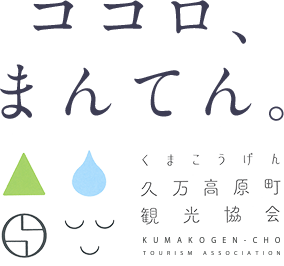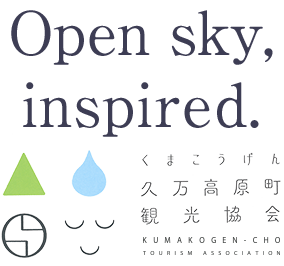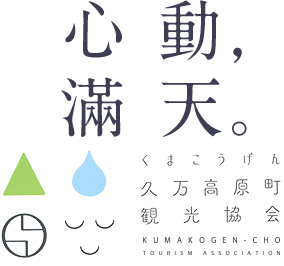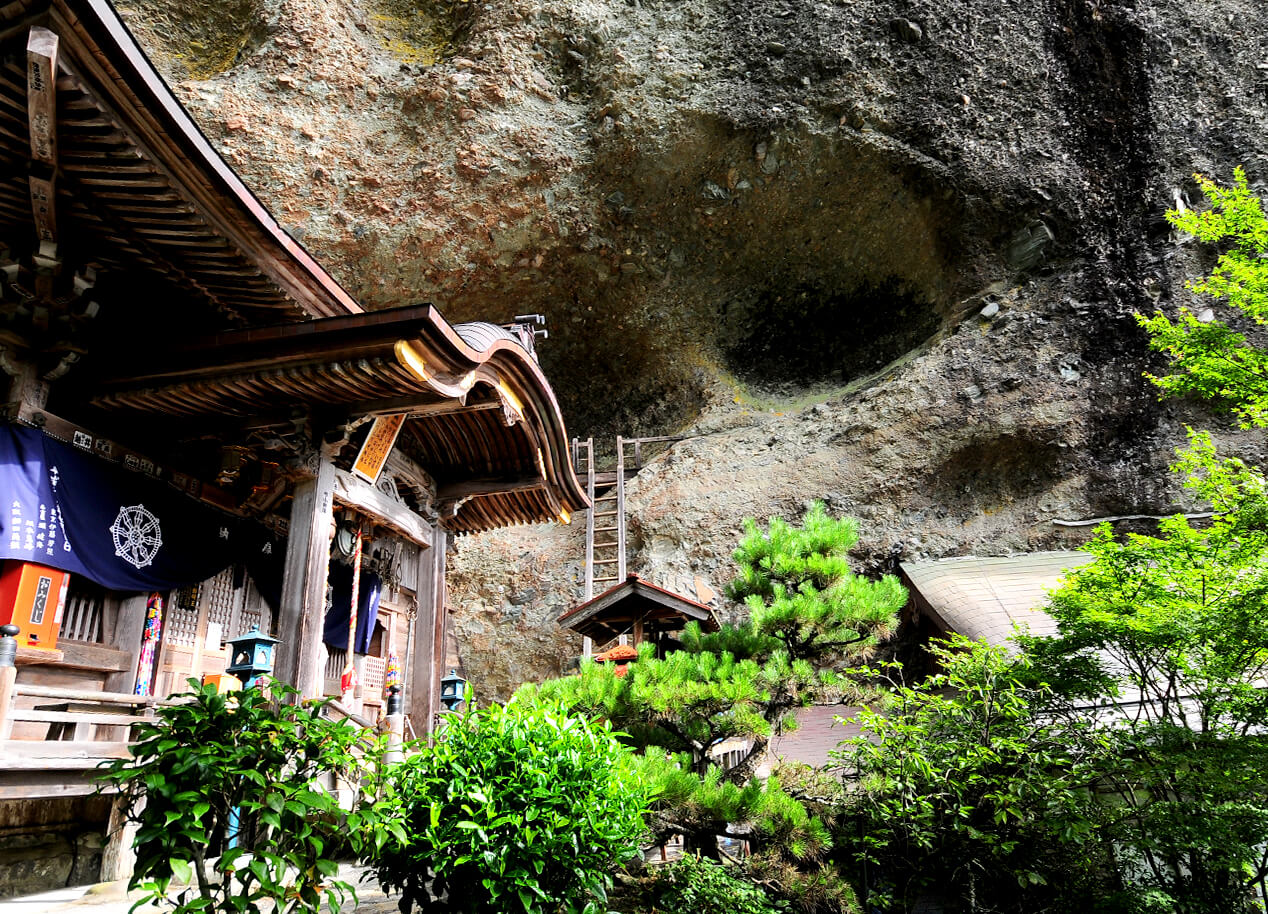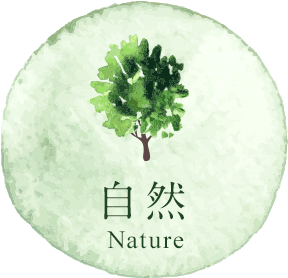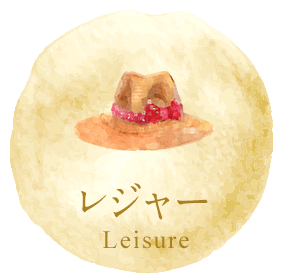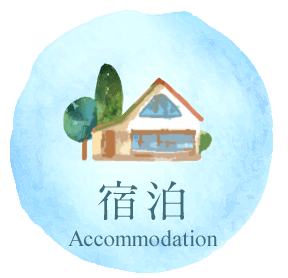

The Shikoku 88-temple Pilgrimage
Kukai (Kobo Daishi), a famed monk and founder of the Shingon school of Buddhism, established the Shikoku 88-temple Pilgrimage route by visiting and building some of the temples about 1,200 years ago. Ever since, the route used to visit these 88 temples, spanning a length of 1,100?1,400 kilometers (684?870 miles), and the act of visiting them have been known in Japanese as the Shikoku Junrei (lit. "Shikoku Pilgrimage") and the O-henro (a term referring to both the pilgrimage and its pilgrims). Today, many Buddhist believers still visit Shikoku each year to take this journey, and the town of Kumakogen-cho is located right in the middle of the 88-temple route.
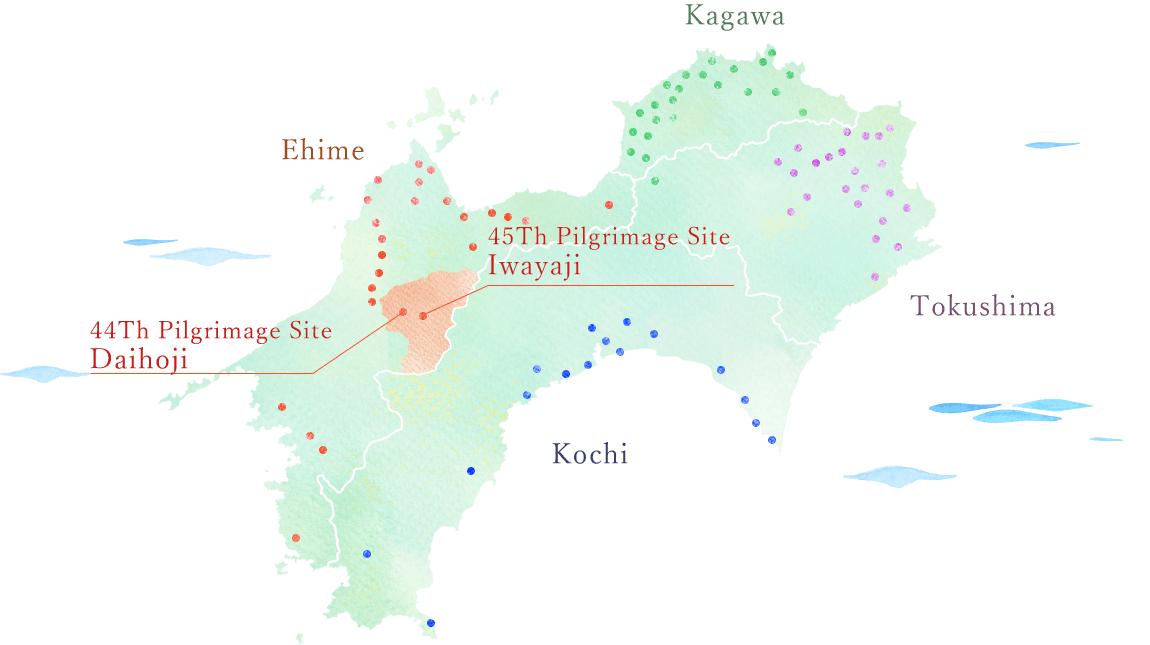
Rediscover and Reenergize Yourself in Kumakogen-cho
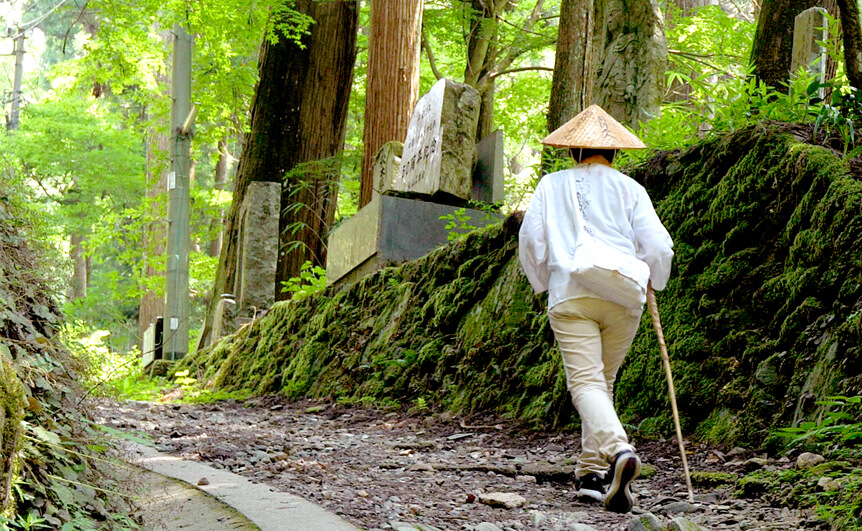
Situated right in the middle of the Shikoku 88-temple Pilgrimage route, Kumakogen is home to the 44th pilgrimage site, Daihoji Temple, and the 45th pilgrimage site, Iwayaji Temple. The former is surrounded by old-growth forest and feels as if it is enveloped in an atmosphere of mystery and wonder, and the latter is a mountain temple seemingly embedded into the side of a massive rock face. Even the roads leading to the temples are surrounded by beautiful verdant scenery. Visit Kumakogen and purify both body and mind while reenergizing amidst Mother Nature.

Making the Pilgrimage
Rules for Pilgrims
The Shikoku 88-temple Pilgrimage is not a simple hiking trip or commemorative stamp collection course. Refrain from taking more than one nokyo-cho (booklet for receiving stamps from each temple visited) per person. Pilgrims on this journey obey the ten Buddhist precepts and travel throughout the countryside of Shikoku together in spirit with Kukai in order to purify their own heart. Please remind yourself of why you chose to take this journey and observe basic etiquette and rules.

Pilgrim Etiquette
- Be sure to exchange greetings with other pilgrims you pass during your journey.
- Do not touch your staff to the ground when crossing a bridge, as Kukai is believed to be resting underneath.
- Always act in a spirit of mutual compromise and assistance.
- Do not refuse hospitality offered by locals; instead, accept it with gratitude.
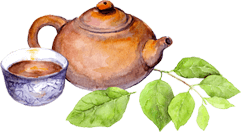
What To Do When Visiting A Temple
- 01Place your palms together in front of you and bow once at the main gate (sanmon) in reverence to Buddha and Kukai.
- 02After entering the temple grounds, purify your body by washing your hands and rinsing out your mouth with water from the basin.
- 03Ring the bell in the bell tower one time. (Bells cannot be rung by visitors at some temples. When applicable, be sure to observe permissible ringing hours.)
- 04Go to the main hall and offer a candle and three sticks of incense. Be sure to use a lighter or match that you have brought with you to light the votive candle; lighting your candle off of another's flame is prohibited.
- 05Offer a votive card or sutra transcription at the designated location.
- 06Make a monetary offering.
- 07Place your Buddhist prayer beads over your left hand, bring your palms together in front of you and pay your respects to the principle object of worship (usually a Buddha or bodhisattva image). After this, bow three times, then recite from the sutra in accordance with your sutra booklet.
- 08Perform the same procedures at the Daishi-do Hall that you followed for the main hall.
- 09Pay the appropriate fee at the designated stamping location and receive a written inscription in black ink and a vermillion stamp in your nokyo-cho stamping booklet, on your nokyo-jiku hanging scroll, on your white pilgrim outfit, etc.
- 10Place your palms together in front of you and bow again when leaving through the main gate.
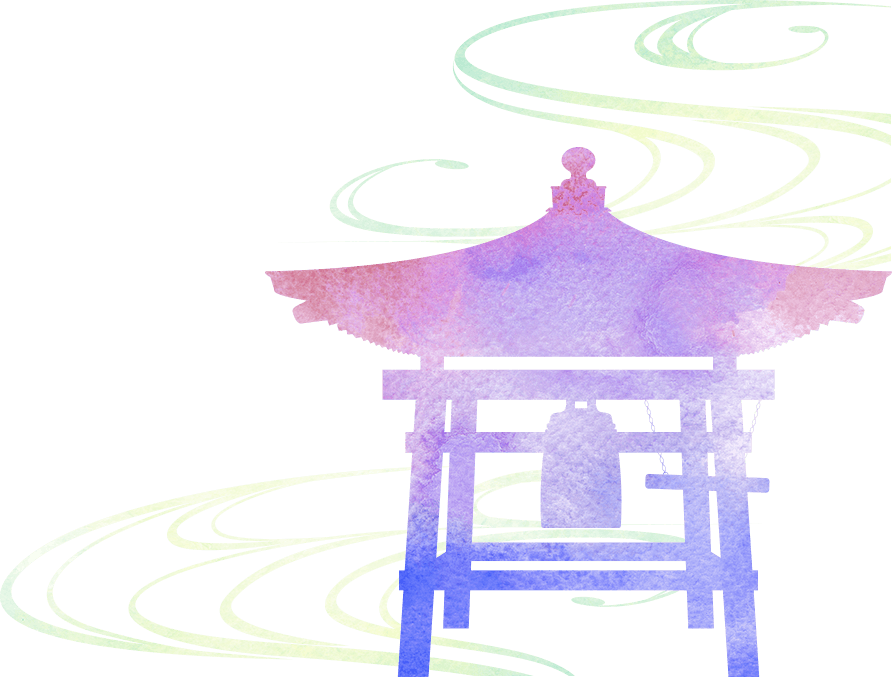


すごうさん だいかくいん だいほうじ 44th Pilgrimage Site: Sugozan Daikakuin Daihoji
Situated right in the middle of the 88-temple pilgrimage route, Daihoji Temple is known as the naka-fudasho (middle pilgrimage site). The temple grounds are surrounded by old-growth forest and feel as if they are enveloped in an atmosphere of mystery and wonder. It is said that the Emperor Go-Shirakawa, an emperor of the 12th century, recovered from his illness after visiting here, and as a result many still come to pray for divine assistance in overcoming illnesses.
- Address
- 1173 Sugo, Kumakogen-cho, Kamiukena-gun, Ehime Prefecture, 〒791-1205
[google map]
- Access
- From Matsuyama Stn. (JR Yosan Line), take a JR bus bound for Kumakogen (1 hr.), then take a taxi to the temple (3 min.)
- Phone No.
- 0892-21-0044
- Temple Hours
- Grounds open all hours; nokyo-cho booklet stamps available 7:00 a.m.?5:00 p.m.
- Lodging
- Available, up to 150 persons (reservations required)
Points of Interest at
Daihoji Temple
Kumayama Peasant Uprising
In 1741, 3,000 local peasants initiated an uprising in response to what they viewed as unfair taxation, and Head Priest Yoshihide of Daihoji Temple stepped in as a mediator. The temple also played a role during the Kamisuki Uprising of 1787 in Tosa Domain (present-day Kochi Prefecture).
Misasagi Gongen Imperial Mausoleum
A burial site for the younger sister of Emperor Go-Shirakawa, comprising a hall and a gorinto pagoda. Visiting this site is said to bring miraculous cures for brain- and head-related illnesses.
Basho-zuka Memorial
This memorial was erected for the memorial service held on the 33rd anniversary of the celebrated poet and cultural figure Matsuo Basho's death.
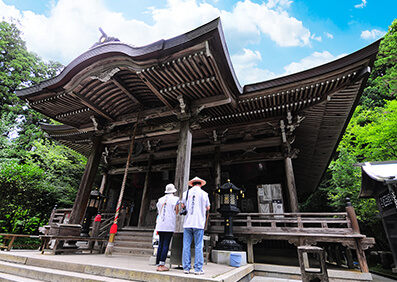
かいがんざん いわやじ 45th Pilgrimage Site: Kaiganzan Iwayaji Temple
This mountain temple towers above, seemingly embedded into the side of the massive stone face and surrounded by protruding, oddly shaped rocks. The Daishi-do Hall, a nationally designated Important Cultural Property, incorporates rose-shaped ornamentations and other Western-architecture elements.
- Address
- 1468 Nanatori, Kumakogen-cho, Kamiukena-gun, Ehime Prefecture, 〒791-1511
[google map]
- Access
- 45 min. drive. from the Matsuyama IC, then a 20 min. walk from the temple parking lot
- Phone No.
- 0892-57-0417
- Temple Hours
- Grounds open all hours; nokyo-cho booklet stamps available 7:00 a.m.?5:00 p.m.
- Lodging
- Unavailable
Points of Interest at
Iwayaji Temple
Anazenjo Passageway
A narrow passageway that passes underneath a stone stairway to the main hall.
Michibiraki-fudo Statue
A statue located behind the Kokuzo-do Hall, down below the nokyo-cho booklet stamping location in the corner
Seriwari Senjo Passageway
Narrow passageway located along the mountain path leading to the Okunoin and Daishi-do Halls.
Suzu-no-ne Sanga (Sound of the Bell Among Mountains and Rivers)
An invigorating tune sung by pilgrims. The song and lyrics were composed by the current head priest.
Seven Birds of Iwayaji
Oriental dollarbird, Malaysian hawk-cuckoo, narcissus flycatcher, oriental turtle dove, narcissus flycatcher, brown-eared bulbul and lesser cuckoo
First-discovered Plants
Diplazium okudairae, Diplaziopsis cavaleriana, Carex tumidula
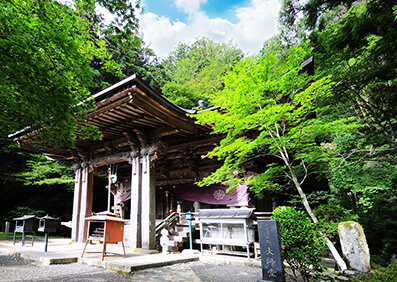
Pilgrimage Route (Henro-michi)
This route,
known in Japanese as the Henro-michi, is used by pilgrims traveling on foot between the 88 temples of the Shikoku Pilgrimage. Although standard automobile roads are included in the Henro-michi route, certain sections feature alternate routes for pilgrims traveling by car, motorcycle or bicycle who are unable to navigate narrow sections of the walking path. These sections deviating from the walking paths are not considered to be part of the official Henro-michi.

This mark indicates Henro-mich
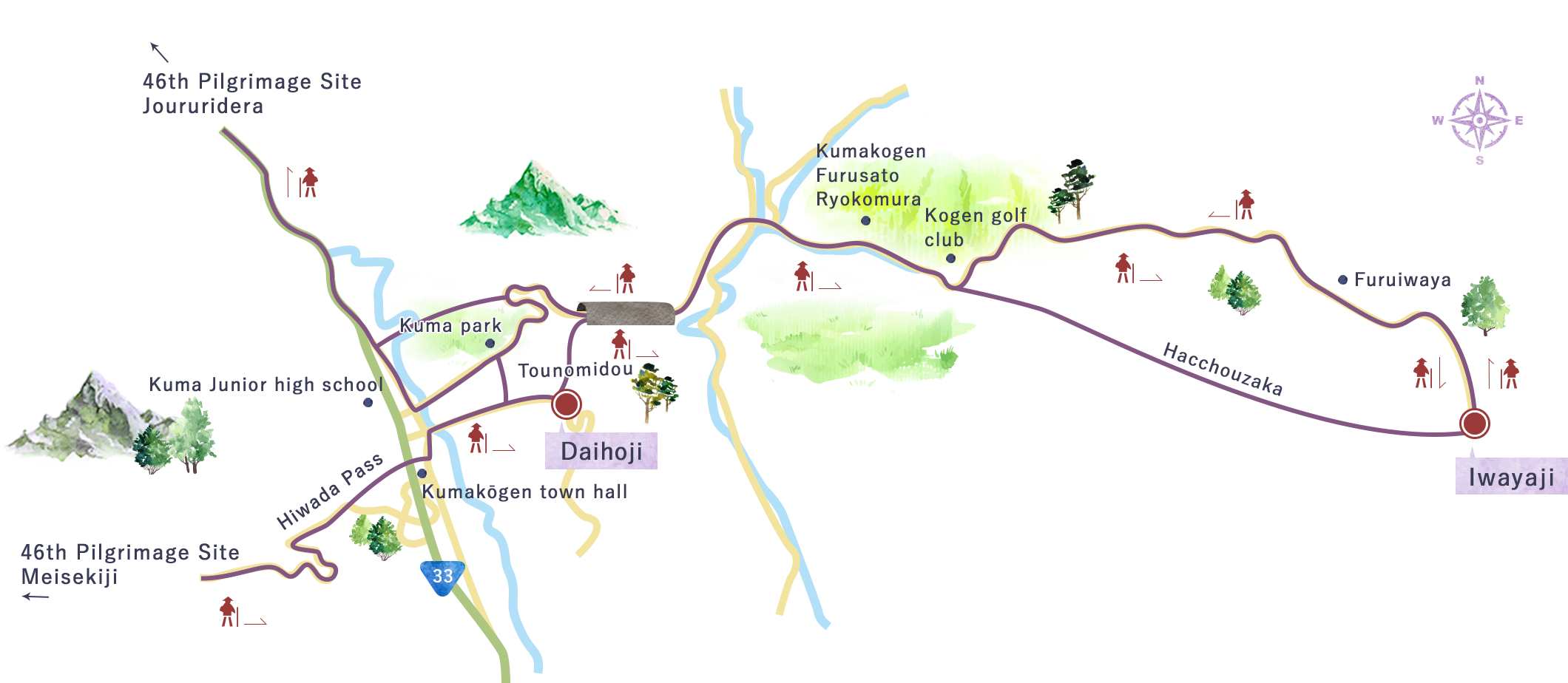
44th Pilgrimage Site:
Sugozan Daikakuin Daihoji
- By Public Transportation
- From Matsuyama Stn. (JR Yosan Line), take a bus bound for Kumakogen (1 hr.), then take a taxi to the temple (3 min.).
- By Car
- Get off the expressway at the Matsuyama IC and take Nat'l Rt. 33 toward Kuma. Turn left at the next traffic light after passing the Kumakogen Police Station, then continue along Pref. Rt. 12. Turn right just before Kuma Park.
45th Pilgrimage Site:
Kaiganzan Iwayaji Temple
- By Public Transportation
- From Matsuyama Station (JR Yosan Line), take a JR bus bound for Ochide/Kuma, get off at the Kuma Bus Center, and from there take an Iyotetsu Nanyo Bus bound for Omogo/Ishizuchi-tsuchigoya.
- By Car
- Get off the expressway at the Matsuyama IC and take Nat'l Rt. 33 toward Kuma. Turn left at the "Kuma Jr. High School" intersection and continue along Pref. Rt. 12. About 3 km (1.9 mi.) after passing the Kokumin Shukusha Furuiwayaso hotel, turn right.


